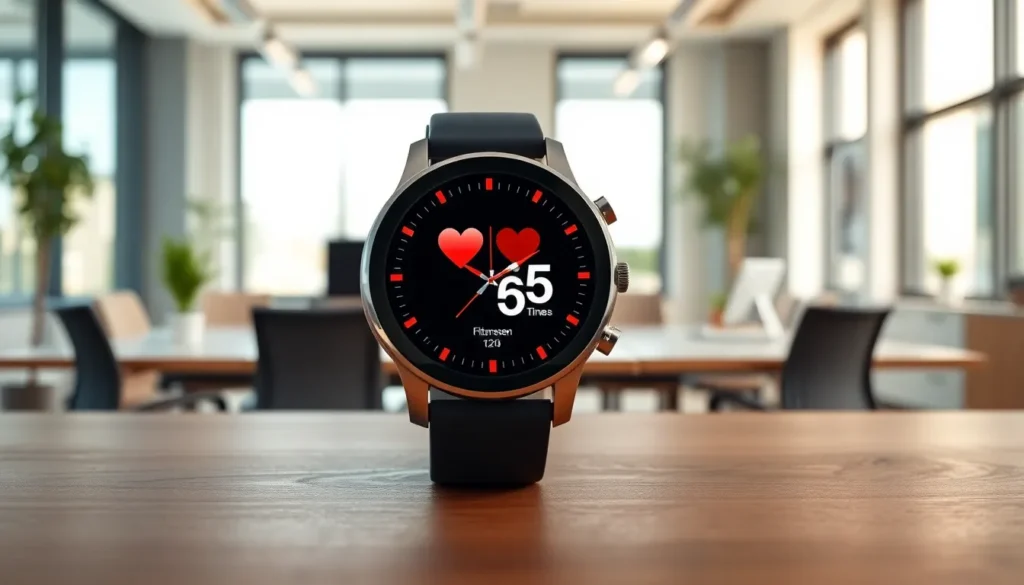Table of Contents
ToggleImagine a world where your wrist knows more about your health than you do. Welcome to the era of IoT wearables, where gadgets not only track your steps but also give you a hand in making healthier choices. These devices have taken personal technology from ordinary to extraordinary, blending style with functionality. Let’s jump into the realm of IoT wearables and explore how they’re reshaping our daily lives, one gadget at a time.
Understanding IoT Wearables

IoT wearables are more than just fashionable accessories: they are smart devices that collect and analyze data to enhance user experience. By leveraging the Internet of Things, these devices communicate with other connected technologies, creating a seamless flow of information. Think of a smartwatch or fitness tracker: it monitors your heart rate, tracks your sleep, and even reminds you to move if you’ve been sitting too long. This interconnectedness makes them invaluable tools for health management, fitness tracking, and even remote monitoring of health conditions.
The Technology Behind IoT Wearables
The magic of IoT wearables lies in their sophisticated technology. At the heart of these devices is the combination of sensors, Bluetooth connectivity, and cloud computing.
Sensors and Their Roles
Tiny sensors measure everything from movement to temperature. These sensors gather data, transmitting it through Bluetooth to smartphones or other devices. Once there, cloud-based platforms analyze the information, providing insights that can improve users’ well-being.
Connectivity and Cloud Integration
Bluetooth, Wi-Fi, or cellular connectivity enables these devices to transmit data in real-time. This instant feedback loop allows users to access their data anywhere, anytime. Besides, cloud integration means that information can be shared with healthcare providers, fitness coaches, or family members, ensuring comprehensive support and monitoring.
Applications of IoT Wearables in Various Industries
IoT wearables have made an indelible mark across multiple industries.
Healthcare
In healthcare, wearables like smartwatches can monitor vital signs and send alerts when anomalies are detected, helping doctors intervene before a situation escalates. This capability is especially beneficial for chronic disease management, ensuring patients remain compliant with treatment plans.
Fitness and Wellness
Fitness enthusiasts use wearables to track workouts and monitor progress. Apps connected to these devices suggest workouts tailored to individuals’ fitness levels and goals, promoting healthier lifestyles.
Corporate Sector
In the corporate world, companies carry out wearables to enhance employee productivity. For instance, smart helmets equipped with IoT technologies can assist workers in hazardous environments, providing real-time data about their surroundings and overall safety.
Benefits of IoT Wearables
IoT wearables come packed with benefits.
Health Monitoring and Early Detection
The ability to monitor health metrics in real-time is perhaps the greatest advantage. Early detection of potential health issues can lead to timely interventions, saving lives.
Enhanced User Experience
Users enjoy personalized experiences tailored to their needs. With wearables, they receive precise health advice and feedback based on their data, making them feel more in control of their health.
Data-Driven Decisions
With vast amounts of data collected, users can make informed decisions about their health and fitness. This data empowers individuals to pursue healthier lifestyles.
Challenges and Considerations
While IoT wearables offer exciting prospects, they are not without challenges.
Privacy Concerns
One major issue is privacy. These devices collect sensitive information, raising concerns about data security. Users must be cautious about where and how their data is shared.
Device Accuracy
Not all wearables are created equal. Some devices may struggle with accuracy, potentially leading to misguided health decisions. Users need to research and choose reputable brands that provide reliable data.
Battery Life and Durability
Battery life can be limiting, especially for high-functioning devices. Manufacturers need to innovate to create longer-lasting and more durable wearables that can withstand daily wear and tear.
The Future of IoT Wearables
Looking ahead, the future of IoT wearables appears bright. With advancements in AI and machine learning, devices will become even smarter, capable of predicting health trends and offering proactive solutions.
Integration with Smart Environments
IoT wearables will likely integrate more seamlessly with smart homes, allowing users to control various aspects of their environments through their devices. Imagine adjusting your home temperature or lighting based on your heart rate or activity level: the possibilities are endless.
Expanding Applications
We can also expect broader applications in sectors like agriculture, where wearables can monitor livestock health. As industries continue to adopt these technologies, user-friendly devices will emerge, making IoT wearables more accessible to a broader audience.




